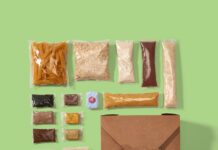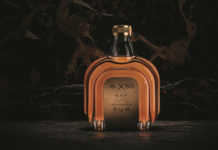The black market in counterfeit goods is an ever-present threat. Stephen Clarke takes a closer look.

A RECENT survey by Dr Graham Jackson, editor of the International Journal of Clinical Practice, has shown shocking insight into the counterfeit drugs market.
The market has doubled in the last five years to more than $75 million, and it has never been more lucrative and presented such a threat for consumers.
There are a large number of websites supplying prescription only drugs without a prescription, with potentially fatal consequences for the public. A study carried out by the European Alliance for Access to Safe Medicines found that 62% of medicines ordered on the internet were substandard or counterfeit. Of these, 68% were unlicensed imitations and the rest were counterfeit branded medicines.
While in the last few years of the economic downturn many companies and sectors have seen growth stall and profits slide, the counterfeit goods industry is showing no signs of demise. In fact, if anything the counterfeiters are getting more skilled and bold in their endeavours.
Medicine has been ruthlessly targeted by the counterfeiters for a number of years with the World Health Organisation (WHO) estimating that around 10% of all medicines are spurious/falsely-labelled/falsified/counterfeit (SFFC) medicines.
This means that everything from treatment for life threatening illnesses to inexpensive everyday drugs like painkillers and antihistamines are being mislabelled on purpose and fraudulently when it comes to the contents and provenance of the medicine. The use of these medicines can then result in treatment failure or even death while eroding consumer confidence in health-delivery systems.
In recent years, there have been several cases where counterfeit medicines have caused severe problems and deaths around the world. The most recent of these cases occurred in China in 2009 where some diabetes tablets containing six times the normal dose of glibenclamide caused two deaths and hospitalised nine.
There have also been cases containing counterfeit Viagra found in Thailand and even in the UK, Zyprexa for treating bipolar disorder and schizophrenia plus the Lipitor drug for lowering cholesterol were detected in the supply chain lacking the sufficient amount of the active ingredient.
So what is happening to combat these counterfeiters? Throughout the world there are various regulatory controls and bodies in place which contribute to the prevention and detection of SFFC medicines. WHO also plays a key role and in 2006 helped set up The International Medical Products Anti-Counterfeiting Taskforce (IMPACT) – a voluntary group that shares a common goal to fight counterfeit medical products.
Unfortunately, this goal cannot be achieved without the medicine manufacturers and brands doing their bit.
When protecting your house against burglars, you don’t generally put all your faith and money in one security option but instead look to protect your house in various ways. With the ingenuity counterfeiters are showing around the world, pharmaceutical companies have to protect their products in the same way and one security solution is never enough.
At API Holographics, we have been working with pharmaceutical companies and manufacturers of pharmaceutical packaging for a number of years. Our range of versatile solutions can help companies stay one step ahead of the counterfeiters to provide various levels of overt, covert and forensic security.
Overt security features are those that are visible to the eye. In pharmaceutical packaging, this can be as simple as a crimped band. When the seal has been broken or is missing, it is clear that the medicine has been opened.
More complex overt security measures though include the use of holographic images. Today holography dominates the authentication market because no competing print technology can work on so many levels of security.
Holographic images can be used to great effect on pharmaceutical packaging as a first level of security. Bespoke holographic images including company or brand logos can be produced using these technologies that are complex and highly advanced, meaning replication is outside the reach of the casual counterfeiter. Certain overt markers can be included in the images which can then be easily checked at every level of the supply chain for authenticity.
In addition, these holographic images have the added benefit of being able to be used as decorative features that improve the eye catching visibility of a product and enhance the perception of the brand.
Tamper-evident solutions are another level of security which can be used on both outside and inner packaging. For example, our newly updated selective release label base allows companies to incorporate both tamper evident and holographic security features onto self adhesive security labels in order to protect products from illegal interference. When a label made with the material is interfered with, either a hexagon or circle pattern is revealed, making detection easy and re-use impossible.
For the inner packaging of medicines such as tablets, our holographic foils are used to print on aluminium blister foil to provide another form of overt, tamper-evident security.
These foils offer an additional benefit of being suitable for overprinting so that barcodes, sequential numbering and DNA codes can also be added to them to provide track and trace capabilities.
Not only do these foils provide exceptional tamper-evident security but they are also vital in helping to fulfil the primary function of the packaging, which for many medicines is to provide a barrier against air and moisture. This is also where our knowledge and expertise regarding coatings and adhesives plays a key role because certain medicines can be contaminated by certain adhesives.
Depending on the medicine to be packed, our dedicated team can work with companies and manufacturers to find the right foil and adhesive which ensures the medicine can do its job for the end user as intended.
The next level of security includes the addition of covert packaging technologies. Covert security features are those that can only be read using a reading device, such as an eye glass or UV light and provide companies with track and trace capabilities.
So when it comes to security solutions for pharmaceutical products, it really can be a life or death decision with no single cure. A multi-layered security approach is required which can help to make replication as difficult as possible and unprofitable for the counterfeiter.
Stephen Clarke is managing director of API Holographics.












